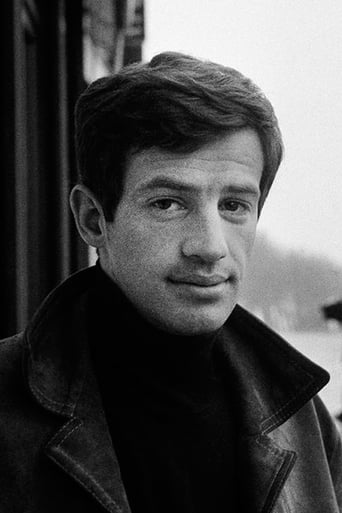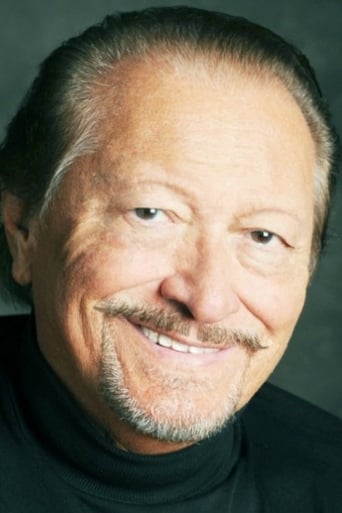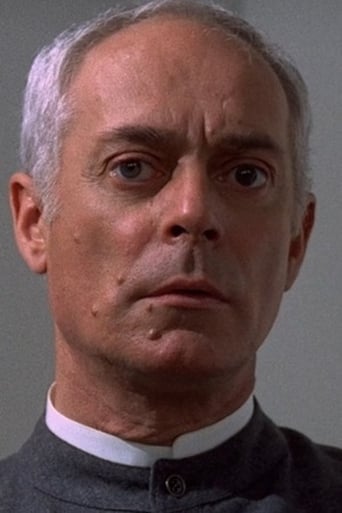Coventry
Oh, how I love the raw and gritty 70's action cinema! Most of it was all about rude and extremely unorthodox macho police detectives hunting down utterly deranged psychopaths that leave a trail of terror and bloodshed throughout the most major cities of our world. The US delivered a couple of brilliant milestones in the genre (like "Dirty Harry" and "The French Connection"), Italy is probably world record holder with all their masterful "Poliziotteschi" classics, and also France proudly owns a handful of goodies. Henri Verneuil's "Peur sur la Ville" is a prototypic 70's cop thriller, and this definition basically translates into: high adrenalin action from start to finish, straightforward but tense plot lines, cool cops, nightmarish criminals, sharp dialogs, pitch-black humor and an awesome soundtrack! J-P Belmondo is absolutely terrific as the dry and sarcastic Commissioner Letellier, charged with the case of a misogynic killer who menaces his victims via the phone prior to actually strangling them. Letellier is initially quite reluctant to lead the investigation, as he's too preoccupied with catching the bank robber that killed his previous partner, but then manages to conjoin the two man hunts. The killer, who baptized himself Minos, is a delightful lunatic with one creepy-looking glass eye and a rather peculiar opinion on femininity. "Peur sur la Ville" features many recurring highlights, like the many sardonic interactions between Commissioner Letellier and his partner Moissac, but of course the most obvious aspect to worship here is the action. Belmondo literally bounces around Paris, from the rooftops of apartment buildings to all the way down in the subway network. One particular chase sequence lasts for nearly twenty minutes and includes both of Letellier's suspect targets. Making it all even more impressive is the fact that J-P Belmondo performed his own stunts. Gazing at some of the set pieces, I can assure you that he repeatedly must have risked his neck throughout this production. Nearly forty years later now, films like "Peur sur la Ville" may indeed come across as somewhat dated and overly clichéd, but it's still tremendously exhilarating and entertaining. Besides, back then those clichés weren't clichés just yet. It's just indescribably charming and fun to watch car-chases featuring those typical light European automobiles making random casualties left, right and center. The climax is tense, albeit a bit tedious and overly stretched, and you won't notice for a second that this is actually quite long for an action/thriller (+120min). Last but definitely not least, the always reliable Ennio Morricone delivers a dazzling soundtrack as well. Hearing his eerie tones during the opening credits, and you just know you're about to witness an overall excellent movie.
RResende
There is a very interesting relation between American and french cinema of the 60'/70'. We all know it began with the new wave guys, first as critics, leading by the remarkable Bazin. They were great in how they put unacknowledged masters, merely considered as competent craftsmen; Hawks, Ray, Hitchcock(!). Than as filmmakers, and that's where things got hot. Godard, the more radical, took us to a self-referential world of cinematic citations. Belmondo was the central character of that Breathless depiction. Curiously, by quoting Americans, the french guided the trends throughout the 60', and made the Americans go after them. But i think the french revolution was thinner than what initially promised (actually as many french revolutions!), and after the excitement of having explicitly oriented to be about films, the enthusiasm vanished. So, way before the end of the 60, the french new wave was, in its original core, worn out. Godard lost babbling about naive idealism, Truffaut, Resnais, Demy... doing their own personal things, actually more interesting (to me) than the original stuff, but totally away from what the new wave wanted. That's when some Americans regained the lead. Coppola, Scorcese, Lucas, of course. But remarkably, we have a trend of action films which are really worth watching. Siegel, Frankenheimer and the incredible Friedkin. Those set the trend for what we have here. So this film is a very curious, and interesting product, a product born from the symbiotic relation between American and french trends. Belmondo is the heritage of the original nouvelle vague, even in his (actually awkward) characterization (the cigarette, the hard boiled posture), as well as the cinematic explicit quoting; right at the beginning, the Jean Gabin bit. So already it is good to watch if you know the context, if you know the references.But in its core, and from the investors point of view, this is an action flick, that buys the tendencies of action those days and, to my view, does a very good job. It has a plot, which is discard-able, except for the output of the two cops working together (good-bad), and the general feel to it. Some killer, crazy traumatized, and one interesting aspect. The story announces that its very solution is the eyesight. So Minos is a one eyed fellow, who actually gets tracked down when Belmondo proves the glass eye connection. The very first time the killer shows, near the beginning, we have an eye on screen, to show us that. So the hint is that we'll have something in the eye.And we have that materialized in the action sequences. Here we have some impressive stuff. The trick is to extend the chasing sequences as long as we can, changing sets, changing locomotion medium (foot on roofs, cars in the city, subway/train). One specific long sequence is quite remarkable. It's really well engineered, well integrated in the city, it has carefully framed moments. It's really good fun to watch, and it makes it on a visual way. Usually i don't summarize films, but here i think it's worth looking closer at the scene. *spoilers herein* We have Belmondo surprising Minos, who had just killed another woman. He chases him through rooftops, some shooting moments, acrobatics on top of rooftops, and some delicious glimpses at the city, Paris. Than we have a transition to Lafayette, through a clothing dummies storage, in which the dummies are actually used. We have the Lafayette bit, now we are in public domain. The killer grabs a motorcycle, Belmondo and his partner start the chase in the car. Now we are in the city, ground level, lots on establishing points (remarkably the Paris opera). i enjoyed how they shot the tracking shots inside the chaser's car. At this moment there is another parallel chasing taking place, of an old crook Belmondo was seeking to get. Two other cops follow him while Belmondo still chases the killer. The interesting thing here is how, if you know your Paris, you'll understand through the lines that both chases are close one to the other. So you'll know why at a certain moment Belmondo gives up on the killer to start pursuing his personal vendetta. So he does that, this allows us to refresh the chasing, which by now is already probably 10 minutes long. we have a little bit more of car chase to connect us to the new chased subject, and we get into the subway. Subway and surface trains. Belmondo on the train, tunnels, he gets in, he shoots the guy. End of story. It is complex, it is highly engineered, with a good sense of placement in the city. Belmondo has physical skills, he does his own stunts. This sequence was clearly aiming at the similar car chase of French Connection. That one is fresher, but this one is more complex, it's an extrapolation over the original one. It's worth watching.My opinion: 3/5
michelerealini
"Peur sur la ville" is one of the best films for both Jean-Paul Belmondo and director Henri Verneuil. At the time (1974-75) Belmondo is (with Alain Delon) the biggest French movie star -he's a versatile actor, but he is specialized in action movies where he can do his own stunts... His artistic and physical exploits allow him to be the Number 1 at the French box office between 1970 and 1987.Henri Verneuil is too a versatile artist -in his long career he directs film of every genre, most of them are box office hits. He works with the Top French film stars (Fernandel, Belmondo, Delon, Ventura, Gabin, ...).When the two men meet for this collaboration they are not novice artists and know exactly what they want. A solid thriller ("un polar") in the best French tradition with drama, fear and action. That's what they get and pack cinemas in many countries.Paris is frightened by a psychopath, whose name is Minos. This assassin punishes people who are (in his opinion) sinners... Commissaire Letellier is an athletic cop who reaches to catch him, in putting his life in danger many times.What else can I say? The merit of this movie is the simplicity. Because scenes are not exaggerated with special effects, they are not too violent as well. Efficacy of the movie depends on actors and their physical involvement.Belmondo, who is a mask of the French cinema, is really great. He can be funny and dramatical -in this film he's a charming tough character. He has a lighter approach than Clint Eastood's "Dirty Harry" or than any of Charles Bronson executioners.




